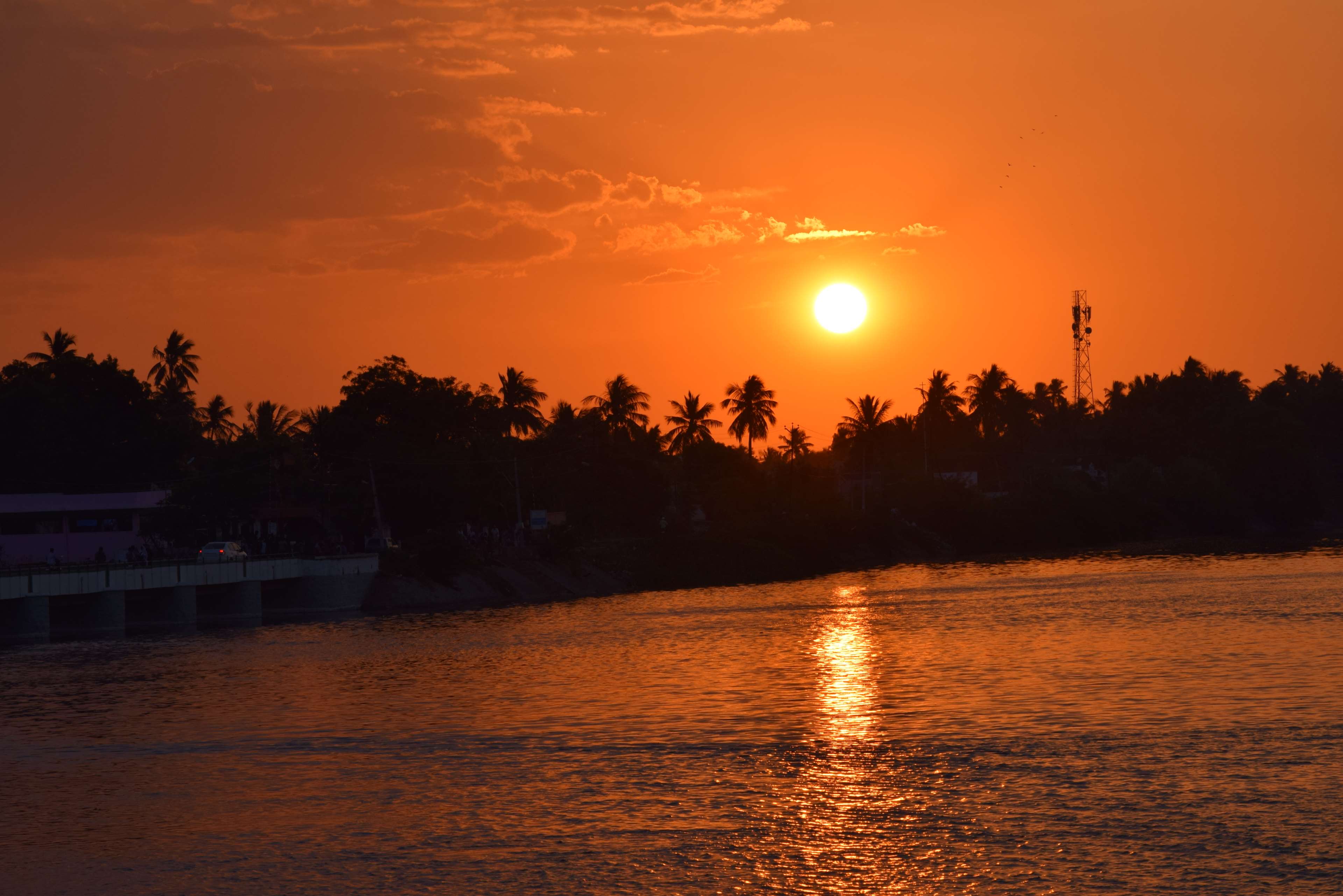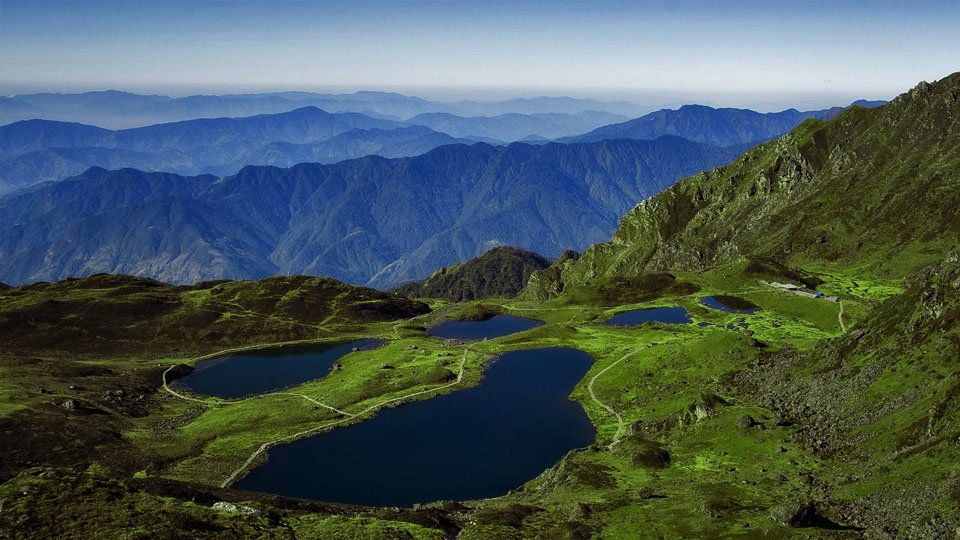Shuklaphanta Wildlife Reserve

Shuklaphanta Wildlife Reserve, located in the far-western Terai region of Nepal, is a pristine conservation area that showcases the country's rich biodiversity and serves as a sanctuary for wildlife. Spanning over 305 square kilometers, the reserve is renowned for its vast grasslands, wetlands, and diverse range of flora and fauna.One of the key attractions of Shuklaphanta Wildlife Reserve is its population of endangered swamp deer, also known as Barasingha. The reserve plays a critical role in the conservation of these deer, as it provides a secure habitat for their survival and breeding. The sight of these majestic animals roaming freely across the grasslands is a truly remarkable experience.The reserve is also home to various other mammal species, including the elusive Bengal tiger, Indian leopard, Asian elephant, wild boars, and several species of deer such as spotted deer and hog deer. The diverse habitats within the reserve support a healthy ecosystem and create favorable conditions for a wide array of wildlife.
For bird enthusiasts, Shuklaphanta Wildlife Reserve is a haven of avian wonders. With over 350 bird species recorded, including both resident and migratory species, the reserve attracts birdwatchers from around the world. The wetlands and lakes within the reserve provide a habitat for numerous water birds, including the rare Bengal floricans, Sarus cranes, herons, and various species of ducks and egrets.The vegetation of Shuklaphanta Wildlife Reserve is equally impressive. The grasslands, locally known as phantas, cover a significant portion of the reserve and are dominated by different grass species. Riverine forests and patches of woodland add to the diversity of the landscape, housing a variety of tree species and offering refuge to several wildlife species.
To explore the reserve and its treasures, visitors can embark on jeep safaris or guided nature walks led by experienced park guides. These excursions allow for close encounters with wildlife while adhering to responsible tourism practices and maintaining the well-being of the animals.The local Tharu community, with their unique culture and traditions, adds another dimension to the Shuklaphanta Wildlife Reserve experience. Visitors have the opportunity to engage in cultural activities, witness traditional dance performances, and learn about the Tharu way of life. The rich cultural heritage of the region enhances the overall experience of immersing oneself in the natural wonders of the reserve.Conservation and sustainable practices are of utmost importance in Shuklaphanta Wildlife Reserve. Efforts are made to involve local communities in conservation initiatives, ensuring that the reserve's natural resources are protected for future generations.
Visiting Shuklaphanta Wildlife Reserve offers a chance to witness the untamed beauty of Nepal's wildlife and immerse oneself in its diverse ecosystem. The harmonious coexistence of flora, fauna, and local communities makes this reserve a must-visit destination for nature enthusiasts and wildlife lovers, providing a captivating and unforgettable experience in the heart of Nepal's wilderness.
Day 1:
- Arrival in Mahendranagar: Arrive at Mahendranagar, the nearest city to Shuklaphanta Wildlife Reserve. Check into your hotel and rest for a while.
- Orientation and Briefing: Meet with your tour guide or park representative for an orientation and briefing about the reserve, its wildlife, and the activities planned for your visit.
- Explore Mahendranagar: Take a leisurely stroll through Mahendranagar, explore the local market, and immerse yourself in the local culture and cuisine.
- Overnight stay in Mahendranagar.
Day 2:
- Transfer to Shuklaphanta Wildlife Reserve: After breakfast, travel to Shuklaphanta Wildlife Reserve. It takes about an hour to reach the reserve from Mahendranagar.
- Check-in at the Reserve: Check in at the reserve's designated accommodation. Rest and freshen up.
- Jeep Safari: Embark on an exciting jeep safari through the grasslands and forests of the reserve. Explore the diverse habitats and keep an eye out for wildlife such as swamp deer, tigers, leopards, elephants, and a variety of bird species.
- Sunset at the Grasslands: Enjoy the stunning sunset views at the grasslands, capturing the beauty of the reserve in the golden light.
- Overnight stay in the reserve.
Day 3:
- Guided Nature Walk: Start your day with a guided nature walk led by an experienced park guide. Explore the trails, observe the flora and fauna up close, and learn about the unique ecosystem of the reserve.
- Birdwatching: Engage in birdwatching activities, as Shuklaphanta Wildlife Reserve is known for its diverse birdlife. Spot various species of resident and migratory birds, including the rare Bengal floricans and Sarus cranes.
- Visit Kanda and Bedkot Lakes: Head to Kanda and Bedkot Lakes, known for their scenic beauty and abundant birdlife. Spend some time near the lakes, enjoying the tranquility of the surroundings.
- Cultural Interaction: In the evening, have a cultural interaction with the local Tharu community. Learn about their traditions, customs, and folklore. Experience traditional Tharu dance performances and indulge in local cuisine.
- Overnight stay in the reserve.
Day 4:
- Morning Wildlife Spotting: Start early in the morning for another opportunity to spot wildlife. Witness the reserve's inhabitants in their natural habitat and capture memorable moments.
- Departure: After breakfast, check out from the reserve and transfer back to Mahendranagar or your onward destination.
- Accommodation: The package includes accommodation within or near the reserve, allowing you to stay close to the wilderness.
- Meals: Most tour packages include meals, including breakfast, lunch, and dinner, offering a variety of local and international cuisine.
- Transportation: The package may include transportation from the nearest city or airport to Shuklaphanta Wildlife Reserve and vice versa. This typically involves private vehicles or shared transfers.
- Park Entry Fees: The cost of park entry fees or permits required to enter Shuklaphanta Wildlife Reserve is usually included in the tour package.
- Activities: The package may cover various activities such as jeep safaris, guided nature walks, birdwatching excursions, and cultural interactions with the local Tharu community.
- Park Guides: Knowledgeable park guides or naturalists may be provided to accompany you during wildlife spotting activities and to provide insights about the reserve's flora, fauna, and conservation efforts.
- International or Domestic Flights: The cost of flights to and from Nepal, as well as domestic flights within Nepal, is generally not included in the tour package.
- Travel Insurance: It is recommended to have travel insurance that covers medical expenses, trip cancellations, and personal belongings, but this is usually not included in the tour package.
- Personal Expenses: Any personal expenses such as souvenirs, additional meals or beverages, laundry services, and gratuities are typically not included in the package.
- Optional Activities: Some activities or experiences outside of the regular itinerary, such as elephant safaris (if available), may incur additional charges.
- Visa Fees: If you require a visa to enter Nepal, the cost of the visa is usually not included in the tour package.
- Tips and Gratuities: Tips for guides, drivers, and hotel staff are not typically included and are at your discretion.
Is it necessary to book in advance for a visit to Shuklaphanta Wildlife Reserve?
It is recommended to book in advance, especially during peak seasons, to ensure availability of accommodations and permits. Walk-in bookings may also be possible, but it's advisable to check with the reserve authorities or a local tour operator for up-to-date information.
What is the best time to visit Shuklaphanta Wildlife Reserve?
The best time to visit is during the dry season, from October to April, when the weather is pleasant, and wildlife sightings are more frequent. However, different seasons offer unique experiences, and the reserve is open throughout the year.
What wildlife can be seen in Shuklaphanta Wildlife Reserve?
Shuklaphanta Wildlife Reserve is known for its population of swamp deer (Barasingha), but it is also home to Bengal tigers, Indian leopards, Asian elephants, wild boars, various species of deer, and an abundance of birdlife.
Are there any safety precautions to keep in mind during the visit?
Visitors are advised to follow the instructions of park guides and authorities, maintain a safe distance from wildlife, avoid littering, and refrain from feeding or disturbing the animals. It's important to respect the park's rules and regulations to ensure both your safety and the well-being of the animals.
What kind of clothing and equipment should I pack for the tour?
It is recommended to pack comfortable clothing suitable for outdoor activities such as jeep safaris and nature walks. Additionally, bring sturdy walking shoes, a hat, sunscreen, insect repellent, binoculars for birdwatching, and a camera to capture the remarkable wildlife and landscapes.
Can I engage in cultural activities with the local Tharu community?
Yes, cultural interactions with the Tharu community are often included in the tour packages. You can learn about their traditions, witness traditional dance performances, and have a glimpse into their daily lives.
Are there any restrictions on photography within the reserve?
Photography is generally allowed within the reserve, but it's important to respect the privacy of the wildlife and follow any guidelines provided by the park authorities. Tripods and drones may have specific restrictions, so it's advisable to inquire about any limitations beforehand.
Are there any medical facilities available within the reserve?
Basic medical facilities may be available within or near the reserve, but it's recommended to carry a basic first aid kit and any necessary medications. For any serious medical emergencies, it may be necessary to seek medical assistance in nearby towns or cities.
Can I extend my stay in the reserve?
Depending on availability, it may be possible to extend your stay within the reserve or nearby accommodations. Consult with the reserve authorities or your tour operator to check the feasibility and make the necessary arrangements.
How can I contribute to the conservation efforts of Shuklaphanta Wildlife Reserve?
By adhering to responsible tourism practices, following park regulations, and supporting local eco-friendly initiatives, you contribute to the conservation efforts. Additionally, you can learn about the reserve's conservation programs and consider making a donation or participating in volunteer activities if available.




















